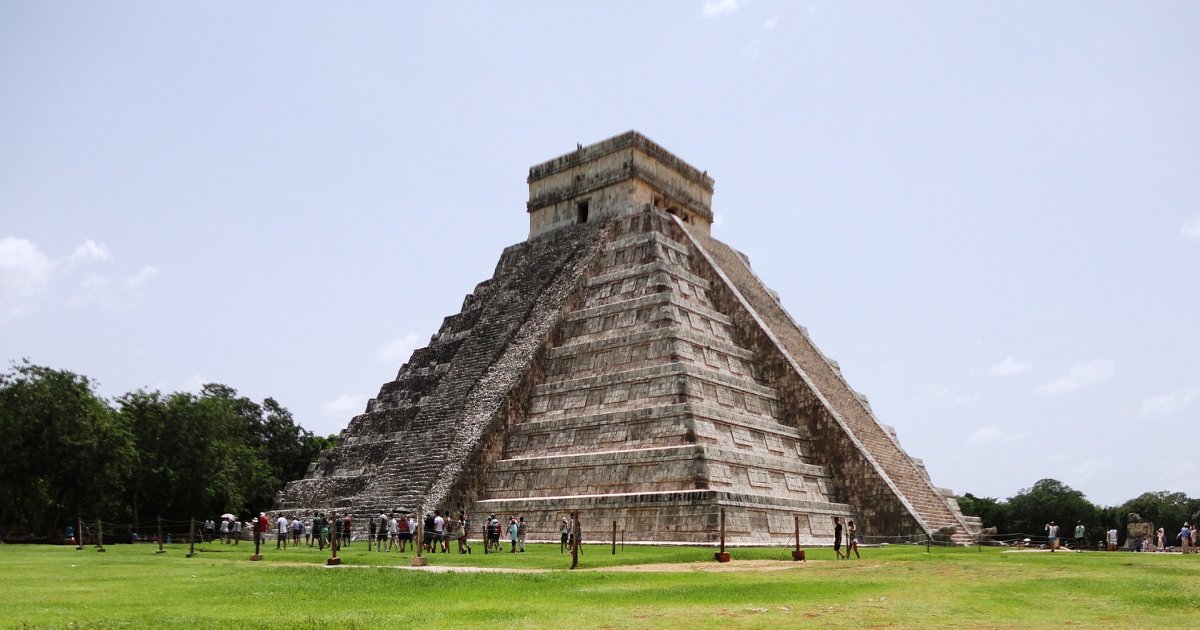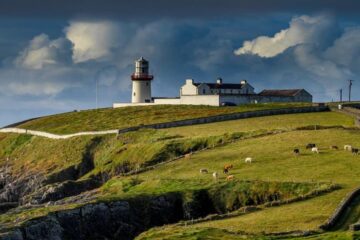As one of the biggest nations on the planet, Mexico has innumerable Landmarks that will astound you. So how do you decide which Mexican sites to see while there?
This blog will enable you to determine which locations in Mexico are the greatest so that you can decide what works with your trip schedule.
Everything on this page is categorized, including Mexico City landmarks, historical sites and prehistoric ruins, man-made and natural landmarks in Mexico, and more.
Are you ready to explore Mexico’s most well-known locations? Let’s start now!
Must visit Landmarks in Mexico
You won’t want to miss any of the fascinating sites in Mexico City.
The list of renowned locations in Mexico City, one of the largest cities on the planet, is lengthy, thus this is undoubtedly a condensed list that yet includes all the city’s illustrious and historic sites.
1. Chichen Itza
Chichen Itza is located in the Yucatan Peninsula and was one of the largest Mayan cities. The most iconic structure in the complex is El Castillo, a step pyramid with a temple at the top that was used for religious and astronomical purposes.
2. Teotihuacan
Teotihuacan is located just outside of Mexico City and is thought to have been one of the largest cities in the world during its heyday. The Pyramid of the Sun is the largest structure in the complex, while the Pyramid of the Moon and the Temple of the Feathered Serpent are also impressive structures.
3. Mexico City’s Historic Center
Mexico City’s historic center is home to numerous landmarks that reflect the city’s rich history and culture. The Palacio de Bellas Artes is an ornate building that houses a museum and theater, while the Templo Mayor was an important Aztec temple that was partially destroyed by the Spanish conquistadors. The Zocalo is the city’s main plaza and is surrounded by numerous colonial-era buildings.
4. Copper Canyon
Copper Canyon is located in the Sierra Madre Occidental mountain range and is actually a network of six canyons that are deeper than the Grand Canyon in the United States. Visitors can explore the canyons on foot, by train, or on horseback.
5. Guanajuato
Guanajuato is a picturesque colonial city that is known for its colorful buildings and narrow, winding streets. The city’s mummy museum contains naturally preserved mummies that were exhumed from a local cemetery in the 19th century.
6. Sumidero Canyon
Sumidero Canyon is located in the state of Chiapas and features towering cliffs that rise up to 3,000 feet above the river below. Visitors can take boat tours of the canyon to see waterfalls, crocodiles, and other wildlife.
7. Monte Alban
Monte Alban is an ancient Zapotec city that was founded in around 500 BCE. The city’s ruins include a large plaza, numerous tombs, and several impressive pyramids.
8. Templo Mayor
The Aztec Empire’s administrative center was the Great Pyramid of Tenochtitlan, which was constructed centuries ago.
It was buried after the Spanish invasion, and the current Zocalo (Town Square) in Downtown Mexico City was constructed on top of it.
The initial searches for the temple were made in the 19th century, but there was little widespread interest.
Even though they persevered and had a fair notion of the temple’s location by the 20th century, it was finally stumbled upon!
Now, you may see the temple’s ruins and view some of its most priceless artifacts by taking a tour.
Around 7,000 artifacts and relics were retrieved throughout the excavations. One of Mexico City’s top museums, the nearby Templo Mayor Museum, currently has several of them on exhibit.
9. Catedral Metropolitana
Whether you practice religion or not, you must visit Mexico to witness this! One of South America’s biggest churches, it was completed in 1813. It is difficult to pass the cathedral without it being the focal point of your gaze.
The Metropolitan Cathedral, also known as the Catedral Metropolitana in English, is home to some magnificent artwork and has one of the most exquisite high altars.
The massive pipe organs in this church are beautiful, so try to come during service if you can. There are two renowned pipe organs in this cathedral that may be heard from the outside.
You may hear the beauty pouring out of the Catedral Metropolitana while drinking coffee outdoors during mass.
10. Castillo de Chapultepec
Mexico’s contemporary history is encapsulated in this castle. One of the most well-known structures in North America is this palace, which was said to be located on a sacred Aztec site.
The 18th-century Castle Chapultepec is renowned for its magnificent gardens. The Mexican president would live here until 1939.
This Castle has served as a military school, imperial home, presidential home, and observatory in the past. The National Museum of History has been located at Chapultepec Castle since the 1940s.
11. Xochimilco
One of the nicest spots to visit in Mexico City is Xochimilco (pronounced so-chee-mil-ko).
Xochimilco, a district in the city’s south close to Coyoacan, is well-known for its complicated system of canals and colorful gondola boats.
A UNESCO World Heritage Site in Mexico, the Xochimilco canals provide a unique look into the Aztec culture.
This prehistoric culture employed the canals, which were manually carved, as its principal route for trade and commerce.
A type of party boat and a tour of the chinampas, or floating gardens, are the two main methods to go to Xochimilco.
The latter reveals Xochimilco’s historical side, where organic food is still grown by farmers using methods that date back thousands of years.
12. Basílica de Guadalupe
The 13th biggest church in the world is the Baslica de Santa Mara de Guadalupe, more commonly known as the Baslica de Guadalupe.
The basilica’s most recent structure was constructed by renowned Mexican architect Pedro Ramrez Vázquez, making it one of the greatest architectural locations in Mexico.
This sacred location, which is often visited by tourists and members of the religious community throughout the year, welcomes over a million people on December 12.
This church was constructed in her honor, and today is the Dia de la Virgin de Guadalupe celebration.
13. Ángel de la Independencia
The Angel of Independence, sometimes referred to as the Monumento a la Independencia, is situated on a roundabout on the busy Paseo de la Reforma. A bus trip is an ideal method to see this monument.
The angel is perched atop a tomb built in honor of the nation’s most significant Revolutionary War veterans. One of Mexico City’s most identifiable landmarks is it. Its central position makes it a popular place for both festivities and demonstrations.
14. El Tajin
The remote yet interesting spot of El Tajn is located in the Mexican state of Veracruz.
It is also a UNESCO World Heritage Site in Mexico since it was one of the largest and most important towns in Mesoamerica throughout the Classic Period until it was abandoned in 1200 AD.
If you’re hunting for undiscovered gems in Mexico, El Tajin Mayan Ruins will wow you with their immense size and remarkable, carved stone pyramids.
If you go, you should also visit the nearby Veracruz town of Papantla, which is well-known for the celebration known as the Voladores de Papantla.
15. Palenque
Palenque was a powerful Mayan city-state that flourished during the 7th century. The city’s ruins are spread out over a large area, and visitors can explore structures like the Palace, the Temple of the Inscriptions (which contains the tomb of the ruler Pakal), and the Temple of the Cross.
Read more interesting facts about Mexico.




